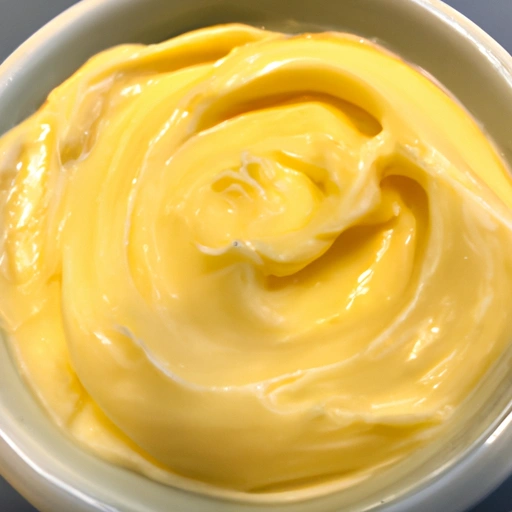Custard
Description

Custard is a beloved dessert and culinary ingredient known for its rich, creamy texture and delicate sweetness. It is made by thickening milk or cream with eggs or egg yolks and is often sweetened and flavored with ingredients like vanilla, chocolate, or fruit. Custards can vary in consistency from a thin pouring sauce to a thick pastry cream, depending on the preparation method and proportions of ingredients used. In both savory and sweet dishes, custard's versatility makes it a staple in kitchens across the world.
Common uses
Custard is commonly used as a dessert on its own or as a component in a variety of sweet treats. It can be served as a pudding, used as a filling for pastries and pies, or layered in trifles and parfaits. Additionally, custard forms the base for ice cream and many custard-based sauces used to accompany other desserts.
Nutritional value
Calories
A 1/2 cup (120 ml) serving of custard typically contains approximately 160-200 calories, depending on the ingredients and preparation method.
Protein
Custard provides about 6-8 grams of protein per 1/2 cup (120 ml) serving, mainly from the eggs and dairy used in its preparation.
Fat
The fat content in custard can vary, but a 1/2 cup (120 ml) serving generally has around 9-12 grams of fat, with a mix of saturated and unsaturated fats.
Carbohydrates
Carbohydrates are present in custard, with a serving of 1/2 cup (120 ml) containing about 15-20 grams, largely from sugars and milk solids.
Vitamins
Custard is a source of vitamins A and D, as well as some B vitamins, particularly B2 (riboflavin) and B12, due to the dairy and eggs.
Minerals
Important minerals found in custard include calcium, phosphorus, and smaller amounts of iron and magnesium.
Health benefits
Custard can be part of a balanced diet, offering protein for muscle repair and maintenance, and calcium for strong bones. The vitamins present in custard support various body functions, including vision (vitamin A), skin health (vitamin D), and energy metabolism (B vitamins).
Potential risks
Consuming custard in large amounts may contribute to excessive calorie intake, and it can be high in sugars and saturated fats, which are not recommended for heart health when consumed in excess. Additionally, custard is not suitable for those with allergies to dairy or eggs and those who are lactose intolerant.
Common recipes
Custard is featured in recipes like crème brûlée, flan, custard tarts, and éclairs. It is also the base for quiches and some savory pies.
Cooking methods
Custard is typically cooked over low heat to prevent curdling, using techniques like tempering, baking in a bain-marie, or stirring in a double boiler.
Pairing with other ingredients
Custard pairs well with fresh fruit, like berries or sliced peaches, as well as with baked goods such as cakes and cookies. It complements other rich flavors like chocolate, caramel, and nuts.
Summary
Custard is a creamy, versatile ingredient used in both sweet and savory dishes. Its rich texture and flavor make it a favorite in various cuisines around the world. While it provides certain nutritional benefits, moderation is key due to its calorie and fat content. With a variety of uses in the culinary world, custard remains a classic and cherished element in many recipes.